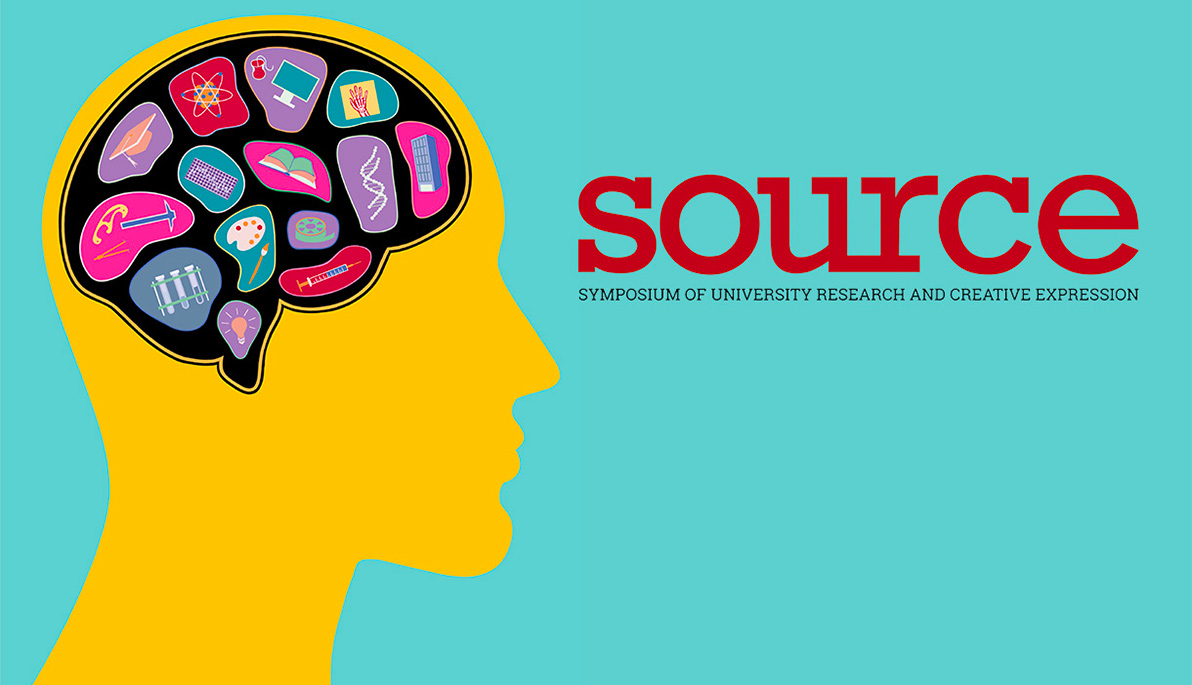News
SOURCE 2021
April 29, 2021
More than 135 undergraduate and graduate students showcased their research and creative scholarly work at the annual Symposium of University Research and Creative Expression (SOURCE) held virtually on April 23. SOURCE highlights both student-faculty collaborations and interdisciplinary education.
Daniel Quigley, Ph.D., dean of the College of Arts and Sciences, and Elizabeth Donaldson, Ph.D., professor of English, kicked off the day's event by welcoming students and thanking them for their dedication to academic research. Following congratulatory remarks from President Hank Foley, Ph.D., and Provost and Vice President for Academic Affairs Junius J. Gonzales, M.D., M.B.A., students heard from keynote speaker David Schwartz, Ph.D., author of the book The Last Man Who Knew Everything. Schwartz’s presentation, “Enrico Fermi and the Art of Mastering a Subject,” discussed the life and work of the renowned physicist and creator of the world’s first nuclear reactor. He talked about Fermi’s achievements, including the Nobel Prize in Physics and the Hughes Medal, with the takeaway message that it took Fermi nearly his entire life to become an expert in his field.
“It’s better to understand the material than to try to do it fast. The mastering of any field is possible with the approach of not getting things quickly, but building slowly a foundation that is absolutely unshakable,” Schwartz shared.
Throughout the day, students shared their research projects in the form of verbal presentations and poster presentations. Research topics ranged from the impact of sound on mood and memory to health policy research on marijuana, studies on cancer prevention, and the psychological impact of architecture, among many other subjects.
A project by Aleksandra Zatorksa, a graduate student studying architecture, highlighted how architects and designers can use virtual reality (VR) to test their plans for built environments. Using VR, the study monitored individuals’ neurological responses to design ideas, including whether proposed spaces may elicit feelings of trauma and comfort. The project aims to ensure that spaces promote well-being and healing before they are created. Zatorska was mentored by VR expert Randy Stout, Ph.D., director of the Center for Biomedical Innovation and assistant professor of biomedical sciences at NYIT College of Osteopathic Medicine, and Marcella Del Signore, M. Arch., associate professor of architecture and director of the Architecture, Urban and Regional Design, M.S., program.
In another project, College of Arts and Sciences students, including several from the biotechnology and life sciences programs, sought to improve cervical cancer detection. Krushang Kamleshkumar Pandya, Caroline Fernandez, Tanvi Patel, Brian Siuni, and Sai Srija, mentored by Niharika Nath, Ph.D., professor of biological and chemical sciences, presented their project, “Towards Early Detection of Cervical Cancer.” During their presentation, the students explained methods of cervical cancer prevention, including regular screenings for pre-cancerous abnormalities in cervical cells. Students explained that while the Pap smear test looks for any abnormal or pre-cancerous morphological changes in the cells on the cervix, manual screening of the cells under the microscope is subjective, time-consuming, and prone to human error. They aim to quantify data on cellular changes based on their nuclear features and organize the data into two classes, broken down into separate categories based on cell abnormality.
“The depth and breadth of the projects are strong indicators of the quality of our teaching and learning at New York Tech,” said SOURCE Chair Roger Yu, Ph.D., dean emeritus and professor and chair of physics. "I would like to take this opportunity to congratulate all our participating students on their successful pursuit of excellence at New York Tech.”
View all the projects at this year’s SOURCE.






